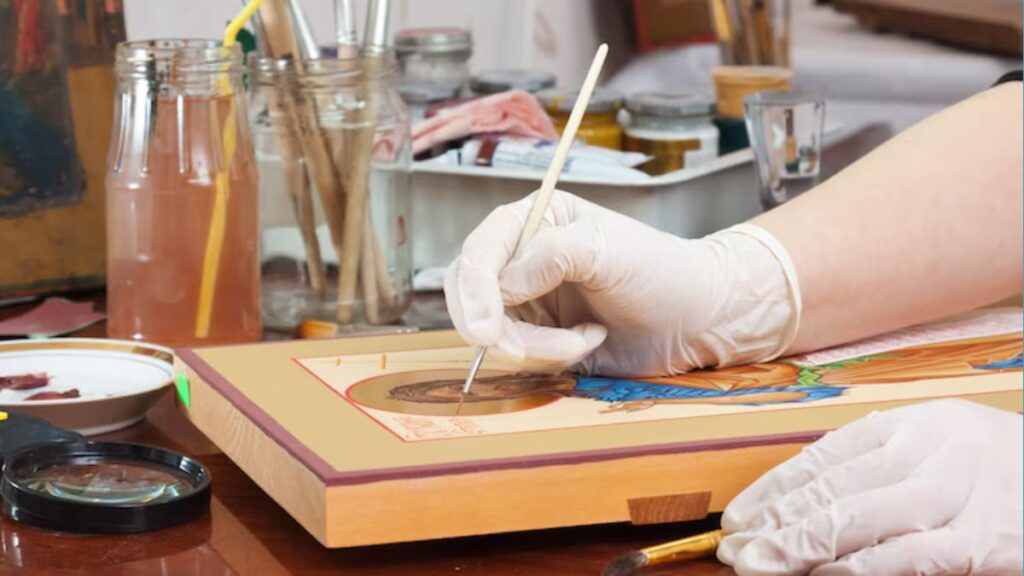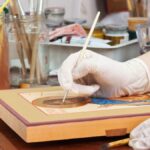Are you ready to unlock a world of creativity? If you’re an artist looking to expand your toolkit, the compound medium might just be your new best friend. This versatile art form combines various materials and techniques, allowing for endless possibilities in creation. Whether you’re painting, collaging, or sculpting, compound mediums offer unique textures and effects that can elevate any project. Dive into this comprehensive guide as we explore the ins and outs of working with compound medium—perfect for artists at any skill level!
Different Types of Compound Medium
Compound medium encompasses a variety of materials, each offering unique properties. Acrylic gels and mediums are popular for their versatility. They can be used to alter the texture or transparency of acrylic paints.
Another common type is modeling paste, which adds dimension to your artwork. This thick paste creates raised surfaces that invite tactile engagement.
Collage mediums facilitate the layering of different materials, such as paper or fabric, allowing artists to explore mixed media in innovative ways.
Oil-based compounds offer rich textures and vibrant colors but require longer drying times. They encourage blending techniques that can create stunning visual effects.
Water-soluble mediums provide flexibility; they allow easy cleanup while working with watercolors or inks. These options cater to various styles and preferences within the art community, inviting endless experimentation and creativity.
Advantages and Uses of Compound Medium in Art
Compound medium offers artists a remarkable range of advantages that enhance creativity and expression. Its versatility allows for blending different materials, giving rise to unique textures and effects. This adaptability makes it perfect for mixed media projects.
Artists can experiment freely with various combinations, from acrylics and inks to found objects. Each layer adds depth, allowing the piece to evolve organically. The ability to manipulate drying times also opens new avenues for techniques such as glazing or collage.
Moreover, using compound mediums often leads to unexpected results that ignite inspiration. It encourages playfulness in art-making while providing endless opportunities for innovation. Whether working on canvas or paper, this approach fosters a dynamic relationship between materials and ideas.
The compatibility with other mediums means that artists can seamlessly integrate their favorite supplies into one cohesive work of art. Embracing compound medium truly enriches the creative process.
Tools and Techniques for Working with Compound Medium
When working with compound medium, having the right tools can make a significant difference. You’ll need brushes of various sizes, palette knives for mixing, and sponges for texture application.
Consider using acrylic gels or modeling paste to add depth. These materials can transform your work from flat to dynamic with just a few strokes.
Techniques vary widely depending on your vision. Layering is popular; apply one layer and let it dry before adding the next. This creates complexity in color and texture.
Don’t shy away from experimenting! Use stencils or stamps to create unique shapes within your piece.
Mix different media like fabric or paper into your artwork for added interest. Each material interacts differently, enhancing the overall effect of your composition.
Embrace spontaneous techniques such as pouring or splattering paint—these methods encourage creativity and often lead to unexpected results that excite both artist and viewer alike.
Step-by-Step Tutorial for Creating a Mixed Media Piece
Start by gathering your materials. You’ll need a canvas, various papers, paints, and of course, your chosen compound medium. Think about textures and colors that excite you.
Begin with a base layer on the canvas. Use acrylic paint or watercolors to create an abstract background. Let it dry completely before moving on.
Next, cut out shapes from different paper types—magazines, textured paper, or old book pages add depth. Arrange these pieces on the canvas until you find a composition that feels right.
Now it’s time for the compound medium. Apply it generously over the arranged papers to secure them in place while adding an interesting gloss finish.
Once everything is set and dried, layer more paint or ink over certain areas to enhance details or unify elements within your artwork.
Experiment freely; there are no strict rules here! Trust your instincts as you build up layers and textures throughout this creative journey.
Tips and Tricks for Using Compound Medium in Various Art Projects
Experiment with layering. Start with a base coat and add different mediums for exciting textures. Each layer can transform your piece entirely.
Mix colors directly in the compound medium for unique shades. This not only saves time but also creates depth in your artwork.
Use stencils or masks to create sharp edges while applying compounds. You can achieve striking contrasts that enhance visual interest.
Don’t shy away from unconventional tools like sponges or palette knives. These can produce unexpected results, adding character to your projects.
Always test on scrap materials before committing to your final piece. It helps you gauge how the medium reacts and adheres under different conditions.
Allow ample drying time between layers. Patience ensures better adhesion and prevents smudging, giving you cleaner lines and crisper details in your art.
Inspiration from Artists Who Use Compound Medium
Many artists have embraced the versatility of compound medium, pushing boundaries and exploring new dimensions in their work. For instance, renowned artist Anselm Kiefer combines painting with natural materials like straw and ash. His textured layers create a rich narrative that speaks to history and memory.
Similarly, contemporary mixed media artist Julie Mehretu utilizes compound mediums to layer intricate maps and architectural designs. Her pieces reflect urban landscapes through dynamic compositions filled with energy.
On a different note, Robert Rauschenberg was known for his “Combines,” where he fused painting with sculpture using found objects. This approach allowed him to challenge traditional definitions of art.
These creators inspire countless others to experiment fearlessly with materials. Their innovative methods highlight how compound medium can transform ordinary elements into extraordinary artworks. Each piece becomes a unique story waiting to be told through texture and form.
Conclusion
Compound medium offers a unique and versatile approach for artists, allowing them to explore new dimensions in their work. With various types available, from acrylics to pastels, each artist can find the perfect fit for their creative vision. The advantages of using compound mediums—such as flexibility and texture—make it an invaluable resource.
The right tools and techniques play a crucial role in mastering this art form. Following a step-by-step tutorial can demystify the process, empowering artists to create stunning mixed media pieces with confidence. Embracing tips and tricks enhances creativity, making every project feel fresh and exciting.
Many renowned artists have made remarkable strides using compound mediums, proving its potential time after time. Their innovative approaches serve as inspiration for both beginners and seasoned creators alike.
Exploring compound medium opens up endless possibilities. Each stroke invites experimentation while building your artistic identity along the way. Whether you’re just starting or looking to expand your skills, embracing this versatile medium could lead you on unexpected journeys through your art-making adventures.






